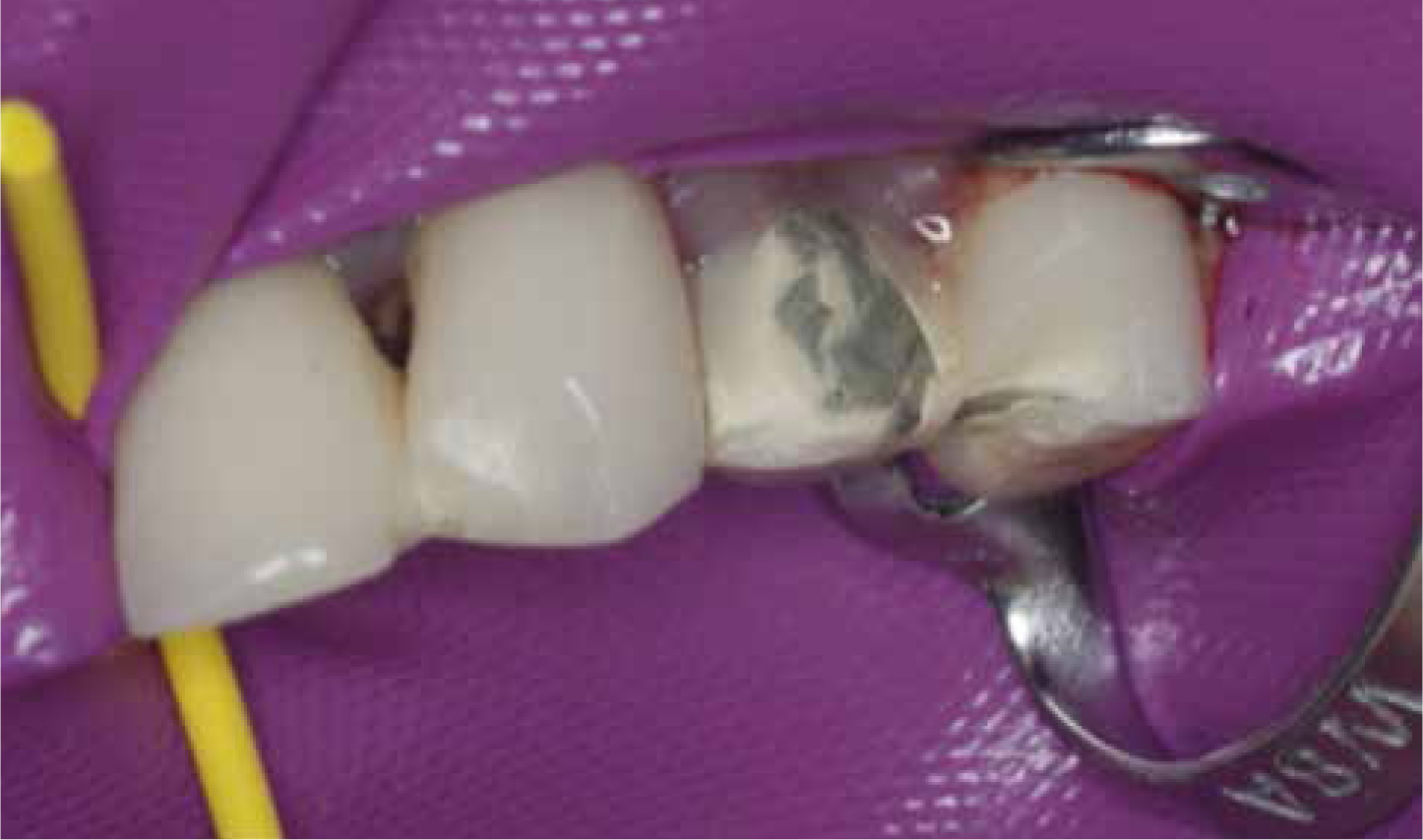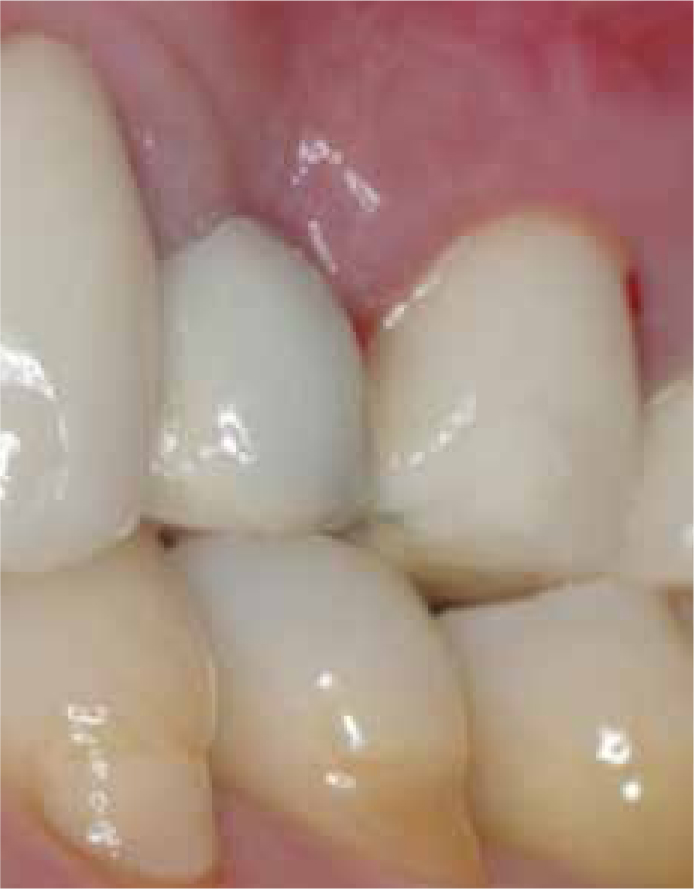Article
The fracture of the ceramic from a metal-ceramic restoration may often lead to an emergency attendance, as previously explained.1 It is the aim of this technique tip to describe a contemporary method of repairing fractured metal-ceramic restorations using only the Cojet sand included in the Cojet system (3M ESPE) but not the other components. Cojet sand contains 30 micron aluminium oxide particles modified with silicic acid: the metal surface is sandblasted with this at a pressure of 0.25 MPa at a distance of 1 cm, causing the surface to become impregnated with silica. This facilitates a bond to resin composite using a silane. In the illustrated case report, the facing debonded from the bridge pontic. The defective bridge was isolated with rubber dam, the patient was provided with a nosepiece and protective eyewear. After sandblasting the exposed metal surface with Cojet Sand (Figure 1), a Universal adhesive (Scotchbond Universal: 3M) containing both a silane and the resin 10-MDP (originally a constituent of the Panavia series of resin-luting agents which have a demonstrable bond to metal2,3) was applied and light cured. An alternative bonding agent could be Clearfil Universal (Kuraray), as it also contains 10-MDP and a silane. Whereas the full Cojet kit contains a resin-based opaquer, an alternative may be a dentine shade of resin composite. Accordingly, after application and curing of the bonding agent, a dentine shade was applied in order to mask the metal and the repair was then completed using an enamel shade of resin composite (Filtek Supreme XTE: 3M) (Figure 2).


In conclusion, while the technique used in this case is based on the ability of the Cojet sand to impregnate the metal surface with a layer of silica and upon a knowledge of how the various components of the suggested bonding agents might behave, there are no long-term clinical evaluations to demonstrate the long-term effectiveness of the technique. Patients with fractured metal-ceramic crowns and bridges should therefore be appraised of the paucity of evidence, but should be offered a repair when in possession of such information. It is, however, the author's experience that the patients will generally opt for a repair as a minimal intervention (and cheaper!) option, even if no evidence-based guarantee can be given.
